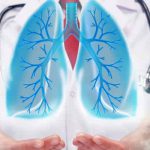Introduction
Cancer has been the focus of medical research as it is one of the foremost causes of death across the globe. Cancer may strike in any part of the body, and depending on it cancer is classified as different types of it. The frequency of occurrence for each type of cancer may vary depending on the country, lifestyle choices, sun exposure, obesity rates, and several other factors. One of the most common cancers in men is Prostate cancer. As per statistics, every 15 minutes across the world die due to Prostate Cancer. Around one in nine males at some point in their life would be diagnosed with prostate cancer, and only one in 41 men may die due to it. The incidence of cancer is the lowest in India amongst other countries.
The doctors in India focus and believe in the early detection of cancer as it becomes easy to manage, treat, and is less expensive at this stage. Though early detection is imperative, most men will ignore it due to misinformation, absence of knowledge, and lower trust in the public health department.
The growth of malignant cells in the prostate gland is termed Prostate Cancer. Prostate cancer is more prominent in men, but the risk is more in older men. Men above the age of 50 years are prone to this cancer. In most cases, cancer develops slowly, though in some cases, it may metastasize to other body parts and can be aggressive too. It could be dangerous to one’s overall health. It is crucial to be aware of all stages of prostate cancer, its complexity, and its suitable treatment. When diagnosed during the early phase, successful treatment is possible with a higher survival rate of prostate cancer patients. Diagnose cancer at an early phase and treat it accordingly. It would be best to opt for an online urologist consultation at the Mediflam platform.
What is Prostate Cancer?
To understand what Prostate Cancer is? First, we need to determine what cancer is.
Cancer is a broad terminology. The unregulated proliferation of aberrant cells in a single location of the body is classified as cancer. These cells infiltrate the neighboring tissues and organs. Then they spread through the lymphatic and circulatory systems. This rapid growth and division of cells result in the formation of a lump known as a tumor. This lump may be benign (non-cancerous) or malignant (cancerous). Cancer may attack any part of the body, and based on it, is classified as breast cancer, lung cancer, prostate cancer, and many other types of cancers.
Cancer that begins in cells of the prostate gland with uncontrollable growth is known as prostate cancer. The prostate gland found only in males is an important aspect of a man’s reproductive system. This gland is in front of the rectum and below the bladder. With age, the size of the prostate gland changes as well. In young men, the size of the prostate gland is smaller, and it enlarges in size in older men. Prostate cancer in Men is the prominent type of cancer affecting most men. As prostate cancer generally occurs in elderly men, it is recommended and critical that men should opt for an online urologist’s consultation at regular intervals to keep a check on their reproductive organs.
Types of Prostate Cancer
Cancer that begins in glandular or mucus-producing cells is known as Adenocarcinoma. Organs having these types of glandular cells may develop adenocarcinoma. Complete diagnosis of prostate cancer will reveal the types of it. Most prostate cancers are adenocarcinomas, and they develop in the cells lining the prostate glands that produce secretions. These secretions combine with sperm to create semen. The cancers in these cells are generally of two types as below:
- Acinar Adenocarcinoma
- Ductal Adenocarcinoma
Over 95 percent of prostate malignancies are adenocarcinomas. Other types of prostate cancer are rare. Apart from adenocarcinoma, the other types of prostate cancer are as below:
- Transitional Cell carcinomas
- Small cell carcinomas
- Neuroendocrine tumors
- Sarcomas
Patients who suspect prostate cancer should seek an online urologist consultation as soon as possible to determine the type of disease and receive effective and prompt treatment.
Acinar adenocarcinoma
Acinar Adenocarcinoma is also known as conventional adenocarcinoma. Almost all prostatic adenocarcinomas are acinar adenocarcinoma. The acini cells line the prostate glands that secrete fluid. Doctors will be able to detect it using a digital rectal examination test.
It is a histological type of gland cancer. Acinar Adenocarcinoma symptoms include frequent urination, weak urine stream, urine that starts and stops, and blood in urine, etc.
Ductal adenocarcinoma
Ductal adenocarcinoma is commonly known as prostate adenocarcinoma. It occurs when dangerous epithelial cells fill the prostate gland’s large acini ducts. DAP or Ductal adenocarcinoma of the prostate is an uncommon kind of prostate cancer that usually occurs in conjunction with acinar adenocarcinoma. The cancer cells are present in the center, but they may affect the peripheral cells as well. Prostatic ductal adenocarcinoma is a more aggressive type of adenocarcinoma than Acinar adenocarcinoma. Being rare and aggressive it is still difficult to detect or diagnose Ductal adenocarcinoma. The prostatic ductal adenocarcinoma is a rare variant of cancer and has badly identified clinical characteristics. It is characterized by a high-grade and high-volume disease with destructive behavior. The Ductal adenocarcinoma symptoms are challenging to detect through the early stages of cancer, due to the lack of distinguishing clinical traits and are generally diagnosed at a later stage.
Transitional cell Cancer
Transitional cell carcinoma or urothelial cancer initiates in the cells lining the urethra. But in rare cases, it may begin in the prostate and spread to the nearby tissues and the bladder. This transitional cell carcinoma bladder is a rare type of prostate cancer. It represents around 1 to 4 % of the total prostate cancers.
Causes of Prostate Cancer
The precise causes of prostate cancer are still being investigated. Experts are still trying to understand why some of the prostate gland cells become malignant. It is assumed that genetics plays a vital role as one of the causes of Prostate Cancer. An individual may be at a high risk of acquiring this cancer when he has a prostate cancer family history. One of the crucial points to comprehend is what causes an enlarged prostate? The DNA of prostate cells mutates, making it impossible for cells to govern their growth and division. In most cases, the mutated cells are attacked by the immune system, however; some may escape and grow uncontrollably to form a prostate tumor.
Hormonal changes could be the cause of an enlarged prostate. as well. If your prostate cancer is aggressive, the cells metastasis, leaving the original spot and spreading to other places of your body. Apart from genetics, exposure to environmental toxins like radiation and other chemicals are other causes of prostate cancer
Symptoms of Prostate Cancer
Prostate cancer usually starts on the outside of the prostate gland. The prostate symptoms may appear if cancer spreads to a wide area and exerts pressure on the urethra. The early stage of prostate cancer rarely shows any symptoms. The symptoms of prostate cancer may occur once the disease progresses to conditions like below:
- Urgent and frequent urge to urinate, especially during the nighttime
- Urine flow that starts and stops
- Weak flow of urine
- Dysuria or pain while urinating
- Bowel or Fecal incontinence
- Aching ejaculation
- Erectile Dysfunction
- Existence of Blood in urine or semen
- Pain in the chest, hip, and lower back
- Numbness felt in feet and legs
The above symptoms do not always indicate prostate cancer. These may be the symptoms of prostate enlargement. Prostate enlargement, a non-cancerous condition, causes prostates to grow larger in older men. The signs that may indicate the spread of cancer include pain in the bones, testicles, and in the back, loss of appetite, and sudden and too much weight loss. While noticing or having doubt about these symptoms, one should opt for online consultation at the Mediflam website to resolve any health issues.
Risk factors that raise the chances of Prostate Cancer
In their entire lifetime, almost all men are at risk of prostate cancer. However, some other specific factors may raise the chances of developing prostate cancer as below:
Ethnicity
As per the statistics, men of African-American descent have the highest chances of prostate cancer, followed by other ethnicities such as Indian and Asian men.
Age
Prostate cancer is aggressive in men after the age of 40 years. The likelihood of developing this cancer is directly proportional to age, the older the man, the more the chances of getting it. According to a study, 60 percent of all prostate cancers are identified in males over the age of 65.
Diet
Medical research also indicates that diet may be one of the factors leading to prostate cancer. Men who consume a high-fat diet, particularly a diet which is high in red meat and dairy products, are more likely to develop prostate cancer.
Obesity
While studies have demonstrated that obesity may not be a crucial risk factor in prostate cancer, obese men are more likely to get this aggressive malignancy.
Family History or Genetics
One of the vital and primary risk factors of prostate cancer is having a family history of it. If your brother or father had it, then there are more chances of you getting it as well.
Some of the risk factors are presumed to be linked with the development of aggressive prostate cancer such as smoking, a sedentary lifestyle, and consuming high levels of calcium. At the same time, it is crucial to note that numerous previously thought-to-be risk variables have recently been shown to have no relation to prostate cancer. They are things such as having a vasectomy, alcohol consumption, and sexual activity.
Why is Prostate Cancer the most common cancer in men?
Depending on their lifestyle and biological characteristics, men and women must deal with different forms of malignancies. The most common cancer in men is prostate cancer. Men above the age of 55 years are more prone to prostate cancer. Most cases of this cancer are found in men over the age of 65 years, and less than 1% are found in men under the age of 50 years. Doctors have attributed two main reasons – smoking and poor eating habits have made men more prone to prostate cancer.
One of the key causes is a gene mutation, this may be genetically transferred to the children.
Most gene mutations that are related to prostate cancer may develop during the lifespan rather than being inherited. The chances of mutation depend on the growth and division of the prostate cells. Male hormones or androgens such as testosterone raise the growth of prostate cells.
Treatments for Prostate Cancer
The treatment of Prostate Cancer can be carried out only after detecting or testing prostate cancer. It is imperative to identify it, especially if there is a family history of prostate cancer. To diagnose it, different tests are helpful like Biopsy, PSA, or Prostate-specific antigen blood tests, and digital rectal exams. The Gleason score is majorly used by the doctor to determine the aggressiveness of this cancer. Based on it the prostate cancer is classified in different stages. After analyzing the stage of cancer, the doctor will advise the suitable treatments for prostate cancer.
The treatment of prostate cancer; is determined by the patient’s specific circumstances. For most men having prostate cancer, treatment may or may not be necessary. During the treatment of prostate cancer, the goal is to cure or control the ailment so that it affects the least in day-to-day activities and does not decrease the life expectancy. If cancer has already spread, then the goal is to delay the symptoms and prolong life.
Some of the renowned treatments for prostate cancer are as below:
- Surgery
- Active Surveillance
- Radiation therapy
- Hormone therapy
- Chemotherapy
- Targeted drug therapy
- High-intensity focused ultrasound
Active Surveillance
Active surveillance and watchful waiting are two different ways to keep a check on cancer and begin the prostate cancer treatment only if there are any signs or indicators of it getting worse or leading to any symptoms. For older men, one of the most recommended options of treatment would be to wait and observe, especially when there are lesser chances of cancer affecting their natural lifespan.
The goal of choosing active surveillance is to avoid unnecessary cancer treatment yet provide timely treatment for those men who require it. This may require MRI scans, PSA tests, and other types of biopsies to keep a check on any signs of progression. If the cancer changes or progresses as a result of this, the treatment is adjusted accordingly.
Surgery
The surgery carried out for prostate cancer is known as prostate surgery or radical prostatectomy. If cancer has not spread beyond the prostate gland, the prostate gland is removed in this procedure to cure it. In such cases, prostate removal is the best treatment. The surgery removes the cancer-infected prostate gland. This is carried out by creating small incisions in the abdomen, using robotic radical prostatectomy or laparoscopic prostatectomy. Both these procedures are less invasive compared to open radical prostatectomy. Radical prostatectomy requires a bigger incision in the abdomen to remove the prostate and the nearby tissues. However, both procedures are effective for prostate cancer removal.
Radiation Therapy
Radiation Therapy means using radioactive emissions to eliminate cancer cells. This is one of the treatment options for the malignancy that has not spread beyond the prostate gland. It is also used to hinder the progression of prostate cancer symptoms. Radiation for prostate cancer involves a machine that delivers powerful X-ray beams on the tumor or the disease site. Using such high-intensity rays kills the cancer cells. Radiation therapy consists of two types:
- Internal radiation therapy, also known as brachytherapy, is a process that involves the placement of radioactive pellets or seeds on the tumor site to eliminate cancer cells.
- External Radiation therapy – in this procedure, a machine outside the body provides radiation on the cancer cells.
Generally, the radiotherapy is carried out in short sessions for around five days a week, for four weeks. These may vary from person to person, depending on the cancer stage. One may also be recommended to undergo hormone therapy before the radiotherapy session to increase the success of the treatment.
It is critical to understand the radiation side effects of prostate cancer. Some of them are as below:
- Diarrhea
- Fatigue
- Uneasiness around the bottom
- Loss of pubic hair
- Pain while urinating
- Frequent urge to pee
- Unable to get an erection
- Bleeding
Mediflam: online urologists consultation
Prostate cancers have been known to have very little or no signs and symptoms. At the same time, it is the second most prominent type of cancer amongst men. After reading the previous content, we have learned that older men are more susceptible to prostate cancer and that a routine health check is essential. Health should be the priority at all ages. Health checks may be done safely and comfortably for the elderly, right in their houses. These can be done by seeking an online urologist’s consultation on the Mediflam platform.It is easy to surf through it. Once the person registers, all the essential health documents and details are easily maintained on the site and the people can choose the doctor of their choice. Depending on the patients’ convenience, time, and language, they can opt for the doctor; seek a diagnosis and treatment accordingly.















